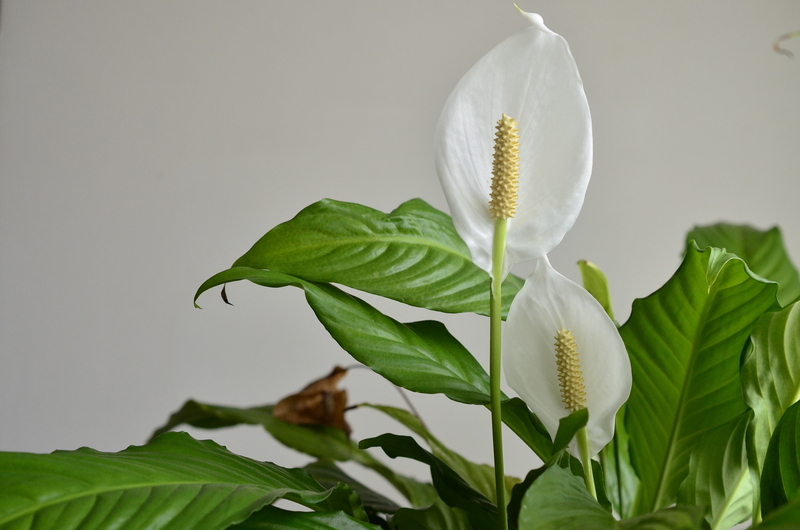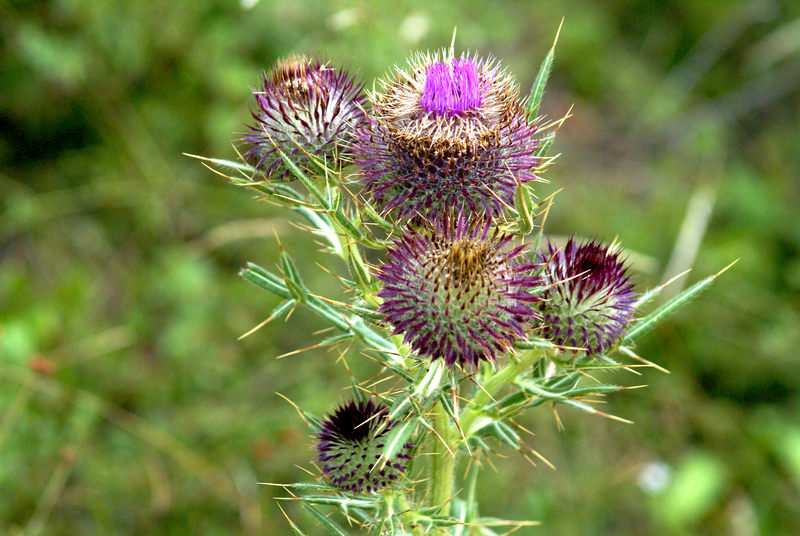Designing a Pet-Friendly Garden Haven
Posted on 30/08/2025
Designing a Pet-Friendly Garden Haven: Your Guide to a Safe and Beautiful Outdoor Space
Are you dreaming of a lush outdoor oasis where all family members--humans and pets alike--can relax and have fun? Designing a pet-friendly garden haven is an art that combines landscaping aesthetics with the practical needs and innate behaviors of your beloved animals. From safe plants for dogs and cats to durable, playful landscaping features, a well-designed garden can enrich your pet's life and become your family's favorite retreat.
Why Prioritize a Pet-Friendly Outdoor Space?
A garden is more than just visual pleasure--it's a place for connection, relaxation, and enrichment. For pets, especially dogs and cats who spend significant time outdoors, the garden can offer opportunities for exercise, mental stimulation, and play. However, not all common landscaping features and plants are safe for animals. That's why creating a pet-friendly garden haven is about harmony: balancing beauty, practical needs, and overall safety.
Key Considerations for Your Pet-Friendly Garden Design
When it comes to pet-safe landscape design, understanding your animal's instincts and needs is critical. Every decision--from plant choices to fencing--should take into account the animals':
- Size and breed characteristics
- Activity level and play style
- Sensitivities and allergies
- Curiosity and tendency to dig, chew, or escape
Balancing these behavioral traits with your personal aesthetic preferences is the heart of designing a pet-friendly garden haven. Let's delve into each aspect of garden safety and enrichment for pets.

Pet-Safe Plants and Greenery: Blooms Without Worry
Understanding Toxic and Non-Toxic Plants for Dogs and Cats
Many popular garden plants are unfortunately toxic to pets. When creating a pet-friendly backyard, choose greenery that's safe even if nibbled. Some plants may cause mild digestive upsets, while others can be life-threatening.
Common Toxic Plants to Avoid in a Pet-Friendly Garden:- Lilies (extremely dangerous to cats)
- Oleander
- Azalea and Rhododendron
- Sago palm
- Foxglove
- Tulips and Daffodils
- Autumn crocus
Instead, opt for these safe landscaping plants:
- Marigolds
- Sunflowers
- Snapdragons
- Rosemary, basil, and thyme
- Camellias and magnolias
- Pet-safe fescue or buffalo grasses
Tip: Consult the ASPCA's Toxic & Non-Toxic Plant List when choosing plants for your garden.
Edible Gardens: Sharing the Bounty with Pets
Want to grow fruits and veggies? Some, like carrots, green beans, and blueberries, can be delicious, healthy treats for pets. However, grapevines, onions, and tomatoes (especially unripe) are unsafe. Smart placement and fencing can help protect both produce and pets.
Hardscaping and Surfaces: Safety and Comfort Underfoot
Paths and Play Surfaces
When designing a dog-friendly yard, consider your dog's joy in running and exploring. Create non-slip, paw-safe surfaces that won't overheat or damage claws.
- Mulches: Cedar or pine bark is softer but avoid cocoa mulch--it's toxic to dogs.
- Gravel: Rounded pea gravel won't hurt paws but can get stuck in fur or be swallowed.
- Artificial turf: Pet-safe varieties are durable, low-maintenance, and don't turn to mud after rain.
- Stepping stones and brick: Flat, even stones provide structure for human and animal traffic alike.
Tip: Regularly hose down paths and play areas to keep them cool and clean--especially in hot weather.
Digging and Chewing Zones
Is your pet a digger? Dedicating a small section of your garden as a "dig pit" filled with soft soil or sand can redirect this natural urge in a safe way. Bury toys or treats here to encourage appropriate behavior. Use edging or decorative stone borders to clearly define this zone.
Fencing and Boundaries: Keeping Pets Secure and Happy
Escape-Proofing Your Garden
One of the biggest concerns for pet owners is garden fencing for pet safety. Choose fencing that:
- Is tall enough (usually at least 4-6 feet for large dog breeds)
- Has no gaps or sharp points
- Extends below ground if your dog likes to dig
- Is constructed from non-toxic materials--avoid treated wood with hazardous chemicals
Invisible fences may not be appropriate for every dog, especially escape artists or anxious breeds. Regularly inspect all boundaries for weak spots and ensure gates always close securely.
Creating Exciting Outdoor 'Rooms'
Pets thrive when their environment is mentally stimulating. Use hedges, trellises, or flower beds to divide your garden into separate zones for running, relaxing, or exploring. Cats may appreciate elevated spaces or secure "catios."
Water Features: Fun and Hydration
Pet-Safe Ponds and Water Fountains
Water adds soothing sound and visual movement to your pet-friendly backyard oasis. When planning a pond or fountain:
- Make water features shallow enough for small animals to escape if they fall in
- Use non-toxic pond treatments--avoid algae-killing chemicals that can poison pets
- Choose solar or recirculating fountains to provide moving water that stays fresher
- Consider a splash pad or shallow pool just for dogs, especially in summer
Always change water regularly and clean features to prevent pests and bacteria.
Shade and Shelter: Essential Comfort for Pets
Animals are sensitive to heat and need plenty of shade. For pet-friendly landscape design, include:
- Natural shade from trees--ensure fallen leaves or nuts are non-toxic
- Pergolas, umbrellas, or shade sails
- Doghouses with good ventilation
- Raised platforms for lounging
Eco-Friendly Garden Care: Pet Health Meets Sustainability
Safe Pest & Weed Control
- Never use slug pellets, rodenticides, or chemical pesticides in pet spaces.
- Try companion planting--marigolds, nasturtiums, or lavender can help deter pests naturally.
- Hand-weed or use corn gluten meal, which is non-toxic to pets, as a weed suppressant.
Always store garden chemicals, fertilizers, and compost in sealed containers out of paws' reach. Choose organic lawn treatments to avoid residues that could harm pets after playtime.
Composting and Pet Waste Solutions
A responsible pet-friendly garden needs a plan for waste. Never put animal feces in your regular compost heap--it can harbor pathogens. Instead:
- Install an in-ground digester specifically for pet waste
- Encourage your dog to use a designated potty area with gravel or sand that can be hosed down
Enrichment Features: Making the Garden a Wonderland for Pets
Dog-Friendly Additions
- Agility tunnels, ramps, and hoops
- Sturdy balls or tethered toys that invite fetching and chewing
- Sniffing gardens--plant patches of pet-safe herbs (like mint and basil)
Cat-Friendly Additions
- Catio enclosures with shelves and scratching posts
- Cat grass (Dactylis glomerata) patches
- Vertical climbing structures or trellis-laced fences
Creature Comforts for All
Both dogs and cats love hidden nooks for hide-and-seek: consider dense shrubs, treated wooden tunnels, or even overturned half-barrels as cozy dens. Rotation of toys and environmental features will keep your outdoor space interesting for pets.
Maintenance Tips for Your Pet-Friendly Garden Haven
- Inspect fences, gates, and borders regularly for wear or breaches
- Rake up fallen leaves and fruit, avoiding temptation for curious chewers
- Replace water daily in bowls and fountains
- Mow lawns and trim hedges frequently--tall grass can harbor ticks
- Monitor weather conditions, and update shade or shelter features as needed

Frequently Asked Questions About Pet-Friendly Gardens
How can I stop my dog from digging up the flower beds?
Dedicate a digging area with loose soil or sand, and encourage your dog to use it by hiding toys or treats. Use decorative fencing or scent deterrents (like citrus peels) to protect sensitive garden zones.
Is artificial grass safe for pets?
Yes, but only if you select high-quality, lead-free artificial turf designed for pets. Ensure good drainage and regular cleaning to prevent bacterial build-up.
What are the safest mulches for pets?
- Cedar and pine bark mulch
- Pebble or pea gravel (with supervision)
- Avoid cocoa mulch and sharp-edged stone chips
Final Thoughts: Enjoy Your Pet-Friendly Garden Haven
Designing a pet-friendly garden haven is a wonderful way to keep your furry friends safe, happy, and healthy--while also creating a beautiful extension of your home. With careful planning and thoughtful features, your garden can become a paradise for humans and animals alike. Embrace plant diversity, play zones, and safe boundaries, and you'll enjoy years of outdoor memories together.
Start planning your pet-friendly backyard today-- your companions will thank you with every happy wag and purr!



